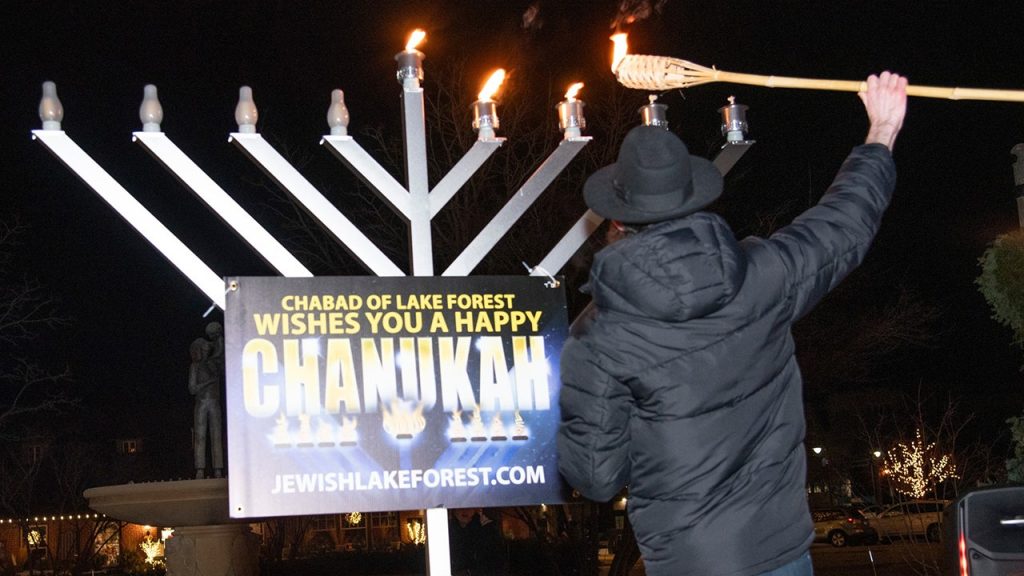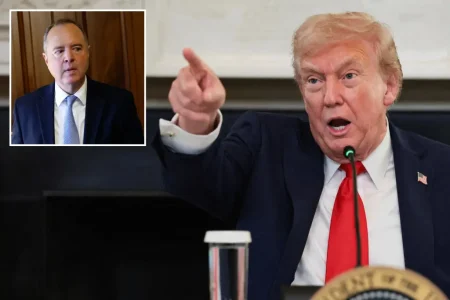The city of Lake Forest, Illinois, has found itself embroiled in a controversy surrounding the display of a Hanukkah menorah in its Market Square shopping center. While the city has agreed to host a menorah lighting ceremony on December 29, 2024, it has stipulated that the menorah cannot remain on display for the full eight days of Hanukkah, citing legal concerns regarding equal access to public spaces for all private groups. This decision has sparked significant backlash, particularly from the local Jewish community and interfaith families who viewed the previous year’s eight-day display as a symbol of inclusivity and a celebration of religious diversity. A Change.org petition, initiated by a local interfaith family, has garnered over 6,500 signatures, demanding the city reinstate the full eight-day display, echoing the sentiment that the limited display undermines the spirit of inclusivity previously demonstrated.
The heart of the controversy lies in the city’s interpretation of its legal obligations regarding the use of public spaces. Lake Forest maintains that allowing one religious group to maintain a display for an extended period would necessitate granting the same privilege to all groups, potentially leading to logistical and managerial challenges in Market Square. This “all or nothing” approach, while presented as a neutral application of policy, has inadvertently marginalized the celebration of Hanukkah, a holiday of significant importance to the Jewish community. The city’s decision contrasts sharply with its actions last year, when the menorah was permitted to remain in Market Square for the entirety of Hanukkah, a precedent that fueled expectations for similar treatment this year. This shift in policy, without clear communication or justification, has contributed to the perception of discrimination and a disregard for the cultural significance of the menorah display.
The petitioners argue that the menorah display is not merely a religious symbol, but also a representation of the community’s rich cultural tapestry. They emphasize the positive reception of the display in previous years, highlighting its role in fostering a sense of unity and understanding among diverse groups within Lake Forest. By restricting the display to a single evening, the city, they argue, is diminishing the opportunity for residents to engage with and appreciate the cultural significance of Hanukkah. The petitioners further contend that the city’s concerns about managing multiple extended displays are unfounded, suggesting that a balanced approach can be achieved without sacrificing the inclusive spirit of the community.
Rabbi Moshe Spalter of Chabad of Lake Forest, who organized the menorah lighting event, expressed his disappointment with the city’s decision, noting the enthusiasm with which the eight-day display was welcomed last year. He emphasized the importance of the menorah remaining in place for the full duration of Hanukkah, not only as a religious observance but also as a symbol of community unity. While acknowledging the difficulty of reversing the city’s decision so close to the holiday, Rabbi Spalter expressed hope for a more accommodating policy next year and encouraged community members to attend the lighting ceremony to demonstrate their support for a more inclusive approach to religious displays.
The controversy underscores the delicate balance that municipalities must strike between accommodating religious expressions and maintaining neutrality in public spaces. While the city’s stated goal is to ensure equal access for all groups, the practical application of this principle has, in this instance, led to the exclusion of a valued community tradition. The significant public outcry, as evidenced by the Change.org petition, suggests a disconnect between the city’s interpretation of its legal obligations and the community’s desire for inclusive representation. This highlights the need for greater dialogue and understanding between the city government and its diverse constituents to develop policies that both uphold legal principles and reflect the values of the community.
The situation in Lake Forest serves as a microcosm of larger national debates surrounding religious displays on public property. The case highlights the complex interplay of legal, cultural, and religious considerations that must be carefully navigated to ensure a truly inclusive public sphere. While the city’s decision may be legally sound, the community’s response underscores the importance of incorporating community values and cultural sensitivities into policy decisions. The upcoming Hanukkah celebration and the surrounding controversy offer an opportunity for Lake Forest to engage in a meaningful dialogue about how to best celebrate its diverse community while respecting the legal framework governing public spaces. This dialogue, hopefully, will pave the way for a more inclusive and representative approach to religious and cultural displays in the future.











